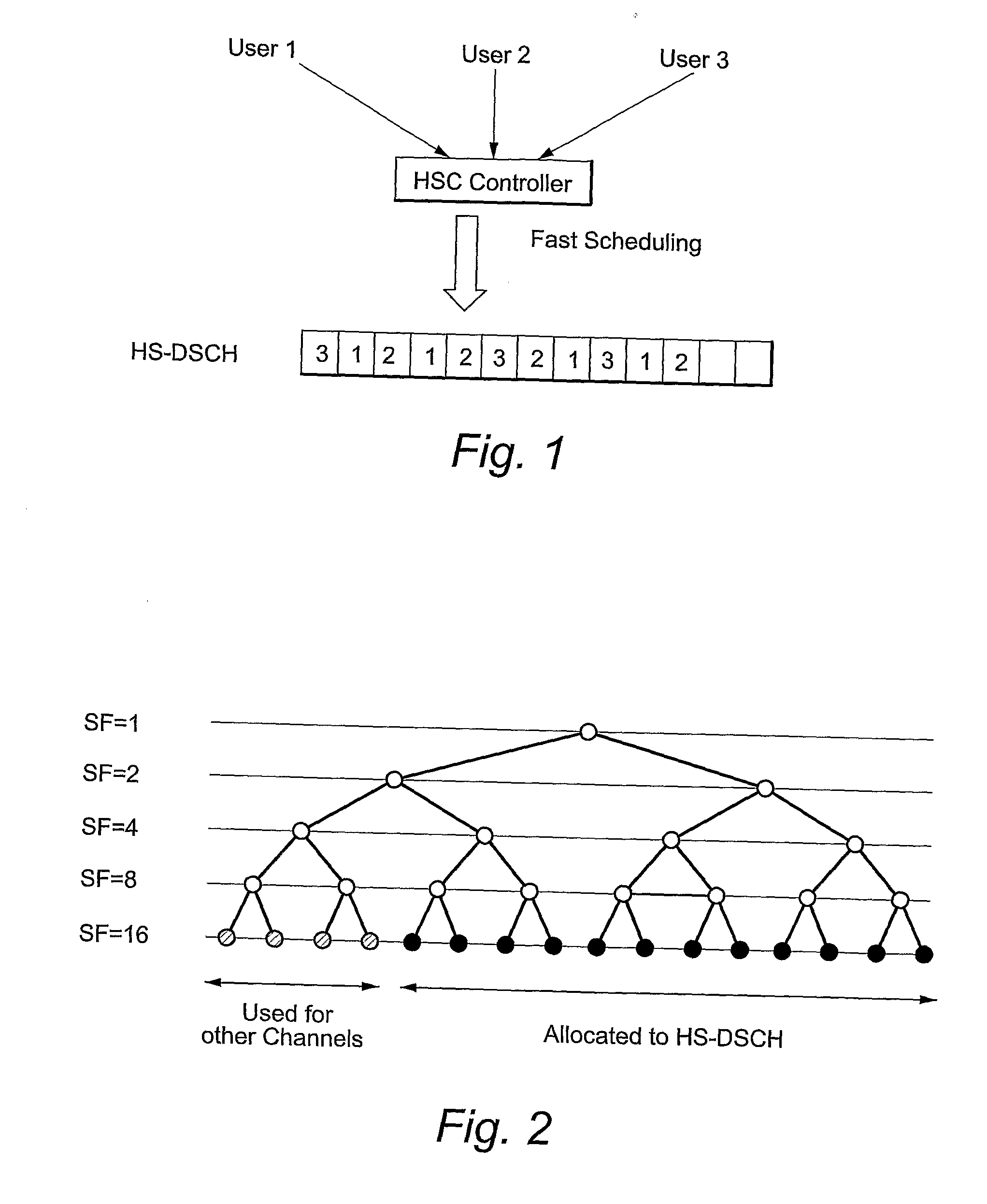Radio Resource Management Based On Load And Channel Inactivity
a radio resource management and load technology, applied in the field of wireless communication, can solve the problems of wasting resources, limit the number of hsc connections that can be maintained, and the maximum data rate is not enough to meet the required quality of services, so as to improve mobile communication services, improve capacity, and improve data rate
- Summary
- Abstract
- Description
- Claims
- Application Information
AI Technical Summary
Benefits of technology
Problems solved by technology
Method used
Image
Examples
Embodiment Construction
[0021] The following description sets forth specific details, such as particular implementations, procedures, techniques, etc. for purposes of explanation and not limitation. It will be appreciated by one skilled in the art that other implementations may be employed a part from these specific details. For example, although the following description is facilitated using non-limiting UMTS examples, the present invention may be employed in any mobile communications network that employs a high speed shared channel. In some instances, detailed descriptions of well-known methods, interfaces, circuits and signaling are omitted so as to not obscure the description with unnecessary detail. Moreover, individual blocks are shown in the figures. Those skilled in the art will appreciate that the functions of those blocks may be implemented using individual hardware circuits, using software programs and data in conjunction with a suitably programmed digital microprocessor or general purpose compu...
PUM
 Login to View More
Login to View More Abstract
Description
Claims
Application Information
 Login to View More
Login to View More - R&D
- Intellectual Property
- Life Sciences
- Materials
- Tech Scout
- Unparalleled Data Quality
- Higher Quality Content
- 60% Fewer Hallucinations
Browse by: Latest US Patents, China's latest patents, Technical Efficacy Thesaurus, Application Domain, Technology Topic, Popular Technical Reports.
© 2025 PatSnap. All rights reserved.Legal|Privacy policy|Modern Slavery Act Transparency Statement|Sitemap|About US| Contact US: help@patsnap.com



